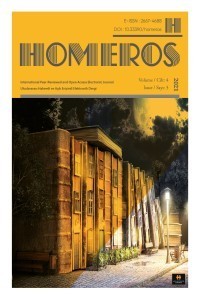TURKISH, ARABIC AND MONGOLIAN AS RECOGNIZED «MIGRANT KNOWLEDGE MATERIALS» IN RUSSIAN LANGUAGE
TURKISH, ARABIC AND MONGOLIAN AS RECOGNIZED «MIGRANT KNOWLEDGE MATERIALS» IN RUSSIAN LANGUAGE
This article discusses the so-called “recognizable” borrowed words of Turkic, Arabic, Mongolian origin in Russian language. Of particular interest is the etnolinguistic, etimological approach to the analysis of borrowed words in diachrony. The ways of borrowing vocabulary are considered, language signs with you can find out, determine the origin of borrowed words. The behavior of “migratory lexical material” (Turkisms, Arabisms, Mongolizm) in Russian is traced.The reasons for the “recognition” of borrowed vocabulary is the preservation of linguistic features from the source language in the recipient language.Most of the borrowed words of Turkisms, Arabisms, Mongolisms, undergoing changes at different levels of the borrowing language, in different periods, are recognizable.The scientific results of the dissertation contribute to the solution of the problems of the historical lexicology of the Russian language, semasiology and lexicology of the modern Russian language, the theory of borrowing, language contacts, cultural linguistics, ethnolinguistics,etymology
Keywords:
Ethnoculturology, etimology, borrowed, vocabulary, diachrony, ethnololinguistics source language, recipient language,
___
- Alimpieva V.V. The semantic meaning of the world and the structure of LSH. – Leningrad: publishing house Leningrad University, 1986. – 177p.
- Altair// [Electronic resource]. URL: https://ru.wikipedia.org/wiki / Altair/ (Reference date:28.11.2020).
- Asfandiyarov I.U. Oriental vocabulary in Russian. - Tashkent: Fan, 1991. – 247 p.
- Dal V.I. Explanatory Dictionary of the Living Great Russian Language. - M .: Russian language, 1999. - T.1-4.
- Dictionary of the Old Russian language (XI-XIV centuries): In 10 volumes / Academy of Sciences of the SSR Institute of the Russian language. Ch. editor R.I. Avanesov. - M .: Russian language, 1988-1989. - T.1-10.
- Dictionary of the Russian language XI-XVII centuries. / Ch. editor S.G. Barkhudarov. - M .: Nauka, 1975 .- 320 p.
- Fasmer M. Etymological dictionary of the Russian language: In 4 volumes - M .: Publishing house of AST, 2003. - V.1-4
- Gabdullina, G.Kh. Oriental borrowings in the language of Muscovite Russia: Author’s. dis. ... doc. filol. Science. Kazan, 2011 – 40 p.
- Gainullina N.I. Borrowed vocabulary in "Letters and Papers of Emperor Peter the Great" (on the problem of mastering words of foreign language origin in the Peter's era): Author's abstract. dis. ... Candidate of Philological Sciences. - Alma-Ata, 1973 .- 24 p.
- Gleizer G. I. History of mathematics at school. –Moscow: Education, 1999. – 200 p.
- Кopulenko M.M. Basics of ethnololinguistics.– Almaty: Eurasia 1997.– 178p.
- Krusin L.P. Foreign words in modern Russian.– Moscow: The science, 1968.– 208p.
- Kulmamatov D.S., Panzhiev N.P., Makhmatkulov S.M. Problems of language contacts and transformational analysis. – Termez, 2001. –110 p.
- Mechkovskaya N.B. Social linguistics. - Moscow .: Aspect Press, 2000. – 207 p.
- Mongolisms in Russian. Center of Lev Gumilyov. [Electronic resource]. URL: https://www.gumilev-center.ru/mongolizmy-v-russkom-yazyke.(Reference date:28.11.2020).
- MusatayevaM.Sh.,Shelyakhovskaya L.A. Ideographic Dictionary of Turkisms in Russian. - Almaty, 2006 .-266 p.
- Myrkasymova A.N. Arabic words on "al" and "al" in Russian. Russian in the XXI century: studies of the young: materials of the VII international student conference. –Nur-Sultan: Publishing house of ENU named after L.N. Gumilyov, 2020 .-S. 152-154.
- Solar and lunar letters //[Electronic resource]. URL:https://ru.wikipedia.org/wiki. (Reference date:28.11.2020).
- Suleimenov O.O. Türks in Prehistory: On the Origin of Ancient Türkic Languages and Writings. - Almaty: Atamura, 2002 .- 320 p.38
- Shcherba L.V. On the concept of mixing languages // Shcherba L.V. Selected works on linguistics and phonetics. - Moscow, 1958. - T.I. - P. 40-53.
- Yunaleeva R.A. Türkisms of the Russian language (problems of polyaspect research). – Kazan: Taglimat, 2000 . – 172 p.}
- ISSN: 2667-4688
- Başlangıç: 2018
- Yayıncı: Holistence Publications
Sayıdaki Diğer Makaleler
TURKISH, ARABIC AND MONGOLIAN AS RECOGNIZED «MIGRANT KNOWLEDGE MATERIALS» IN RUSSIAN LANGUAGE
Sharipova Madina KUANAEVNA, Al-rubayai Ali GOMAR ALİ
NEEDLEWORK AS POLITICAL AND CULTURAL RESISTANCE IN CONTEMPORARY AMERICAN NOVEL
ECO-POETICS OF CHARLES OLSON: AN ECOCRITICAL STUDY ON “THE KINGFISHERS”
1930-1950’Lİ YILLARDA AZERBAYCAN’DA SOSYO-POLİTİK ORTAM VE ROMAN EDEBİYATI
SOME TYPES OF LEXICAL LACUNA (ON THE MATERIAL OF THE RUSSIAN, AZERBAIJANI AND ENGLISH LANGUAGES)
Sevinj Maharramova MAHARRAMOVA
WAYS TO EXPRESS THE AUTHOR'S MODALITY IN KAZAKH, KYRGYZ AND ENGLISH FICTION WORKS
Gulgul ISKAKOVA, Peter KOSTA, Shalabay BERDİBAY, Shapauov Alibi KABYKENOVİCH, Kiyakova RAUSHAN
